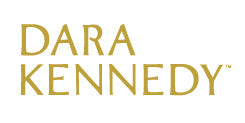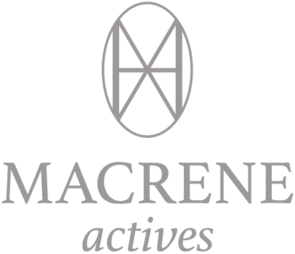Recent Articles
We love retinoids — which include retinol, Retin-A, and other derivatives of Vitamin A — because they comprise the gold standard in performance-focused skincare. There are decades of data to attest to their efficacy and safety, and new formulations have rendered retinol, in particular, less irritating. Even the more delicate flowers among us can now enjoy its benefits: smoother skin, increased collagen synthesis, less hyperpigmentation, even the reversal of sun-induced damage from days gone by. (Fantastic news for those of us who might have tanned a tad too aggressively during spring break in college. For example.)
At the same time, there’s a lot of confusion around it. Is an over the counter retinol product enough, or do you need to get a prescription retinoid like Retin-A? To get the straight scoop, we consulted Seth Matarasso, MD, our favorite West coast dermatologist.

Seth L. Matarasso, MD
Ayla: Tell us about the difference between Retin-A and retinol.
Dr. Matarasso: Retin-A, also called retinoic acid or tretinoin, is vitamin A in a cream form. In a pill form, it’s called Accutane. Retin-A was first used a good 30-35 years ago, primarily for patients with acne. At a basic level, Retin-A provides a slow, controlled exfoliation, taking off the very top layer of the stratum corneum. Over time, in addition to helping with acne, we’ve found that it’s a great way to reduce photodamage.
Retin-A’s precursor is retinol. This is the aldehyde, or non-prescription form, of tretinoin. It’s over the counter and readily available; it’s a gateway to get started on Retin-A. I prefer that my patients use a prescription product eventually, but I think it’s absolutely appropriate for a patient to start with an OTC product, like a retinol, because it’s not as irritating or abrasive.
Unfortunately, I think there’s a lot of misinformation about both Retin-A and retinol — and with OTC products in particular. I’ll frequently have patients come in who have used retinol or Retin-A before and became irritated as a result. They assume they can’t use it or they’re allergic to it, when they just didn’t have the information or guidance they needed. Quite frankly, I’ve never seen anyone who is actually allergic to these products. About 80% of my patients are using some form of it.
Ayla: What do you prescribe Retin-A for?
Dr. Matarasso: It’s great for adult acne, and I use it often with adults who have early onset photodamage — it can mitigate and prevent brown spots and solar lentigines. It’s also a good way to prevent or reduce very fine lines. Because, while Retin-A is addressing the superficial layers of the skin, with time, you get neocollagenesis (new collagen growth), which leads to a reduction in fine lines.
You’ll notice some subtle improvement in discoloration after a few months; it takes a good 8-12 months to see a significant improvement in fine lines. But with any topical preparation, it’s a matter of diligence and continuity. If you just use these products sporadically, you’re not going to see real results.
I also use Retin-A for patients who have gotten a lot of sun damage or actinic keratosis (little rough, scaly spots from UV exposure). I’ll put many of these patients on Retin-A to reduce sun damage and precancerous lesions.
Finally, if a patient’s going to have any type of resurfacing with lasers, or a chemical peel, I like to start them with Retin-A first. I find that they heal more homogeneously and more quickly, because they’ll get a more uniform application of the peel or laser.
Ayla: In your opinion, is it necessary to use a prescription product, or can an over-the-counter product also deliver results that are significant?
Dr. Matarasso: Retinol is a mild exfoliant, while the prescription products are unequivocally exfoliating. In my patient population, it’s perfectly reasonable to start with a retinol. It’s a good way to see if they’re compliant, and to make sure they’re using a sunscreen. But the bulk of my patients will start with a very mild Retin-A 0.2% mixed in a cream. They’ll use this low concentration for a month, then a year, and then graduate to stronger concentrations. It’s a very logical step-wise pattern.
If you’re going with a prescription product, keep in mind that there are many different concentrations. Retin-A can get a bad rap because patients don’t realize that they need to pick an appropriate regimen (every other night, for example), an appropriate vehicle (a cream base is often best to start with, especially if you’re dry), and an appropriate concentration (you should start at a very low level, like 0.2%, and slowly graduate to higher concentrations). It’s not one size fits all.
Ayla: What do you think is most important for a Retin-A or retinol user to know?
Dr. Matarasso: Retin-A is a medical product. It might be a topical product, but make no bones about it — it’s affecting the skin. So, here are my rules:
- Always apply it to a dry face at night. So, wash your face; blot dry, and then take a small amount (the size of a pearl, or the size of an eraser) and apply it to the entire facial skin surface.
- I generally start my patients on an every-other-night to every-third-night regimen. As you get more comfortable, you can increase the frequency.
- I insist that, if you’re not going to use sun protection during the day, you shouldn’t bother using Retin-A at night. It makes you more sun sensitive. I can personally attest to that (I got a rip-roaring burn a dozen years ago when I first started using it and I was reading a book under a tree).
- If you do any kind of facial waxing – mustache, eyebrows – you’ll get a significant reaction as well. I suggest avoiding it for 2-3 days prior to getting any facial waxing.
- If you’re going to get a facial, laser, or chemical peel treatment, make sure your physician is aware of your use of Retin-A, because your skin might be more sensitive.
- If you’re going on vacation in a sun exposed area (whether you’re skiing or you’re at the beach), redouble your efforts with sunscreen.
- I would not recommend, prescribe, or give retinoic acid to a woman who is pregnant, trying to get pregnant, or nursing. I think it’s just not worth the risk.
Ayla: What are some signs that you should back off and use it less frequently?
Dr. Matarasso: It’s very clear. A little bit is good; a lot is not necessarily better. I’ve been using a retinoic acid for nigh upon a decade. I use my Retin-A five nights a week, and if you come into my office on a Friday, you’ll see I’m a little pink. So I take weekends off. Patients can tell that they’re over-retinized when they’re pink, when they’re scaly, when their face is too irritated. At that point, you should back off and take a “drug holiday.”
Ayla: Do you prefer retinoic acid to other acids, like alpha hydroxy acids?
Dr. Matarasso: Lactic and glycolic acids are good, but I put them in the same category as retinol. They’re fine; I use them, and I like them. But they’re over the counter and there’s not much monitoring of them, so patients often don’t know how much of the acid they’re putting on their skin.
Ayla: Do you prefer tretinoin to other forms of retinoic acid? For example, what do you think of Adapalene?
Dr. Matarasso: I’m pretty old school. I like tretinoin because there’s been so much literature on it. It’s tried and true. Adapalene has been around for quite awhile, it’s effective, and I think it’s absolutely reasonable to use. Still, my concerns with it are similar: people can get carried away with it, so you should use it under a dermatologist’s supervision.
And on that note, I should say one more thing. I went to medical school; I know a little bit about delivering a baby, a little about hypertension, a little about psychiatry. But I don’t think I should be practicing in those specific areas. Similarly, I don’t know if a non-dermatologist should be delving into this realm and prescribing Retin-A.
And this does happen. I just saw a woman in my office who flies in from LA for her filler and Botox, and I asked her if we could use Retin-A for maintenance. She said, “Oh no, no — my internist told me that I’m allergic to it.” It turns out that she was using Retin-A twice a day and inadvertently gave herself a peel. Her internist, who originally prescribed it for her, may not have been aware of its side effects. It’s just a cream, but it’s very deceptive. With Retin-A, it’s all about keeping it slow and steady.
***
Note from Ayla: Don't retinoids sound great? We think they are. Check out our guide to all the retinoids on our shelves right here.
About Dr. Matarasso: Seth Matarasso, MD is a graduate of the University of Pennsylvania and the University at Buffalo School Of Medicine. He received his post-graduate medical training at the Mt. Sinai School of Medicine, Baylor College of Medicine, and the University of California School Of Medicine in San Francisco, where he completed a fellowship in Mohs Micrographic and Cutaneous Surgery.
Dr. Matarasso is a Clinical Professor of Dermatology at the University of California School Of Medicine in San Francisco, where he was recently the recipient of Outstanding Teacher of the Year. He is recognized as an expert in the field of cosmetic dermatology and has published over 90 articles in the peer reviewed literature and has presented over 450 lectures nationally and internationally.
Dr. Matarasso currently serves on the editorial boards of the Journal of the American Academy of Dermatology, Archives of Dermatology, Dermatologic Surgery, and Cutis. He has been on the Board of the American Society of Dermatologic Surgery and was the President of the California Society of Dermatology and Dermatologic Surgery.













